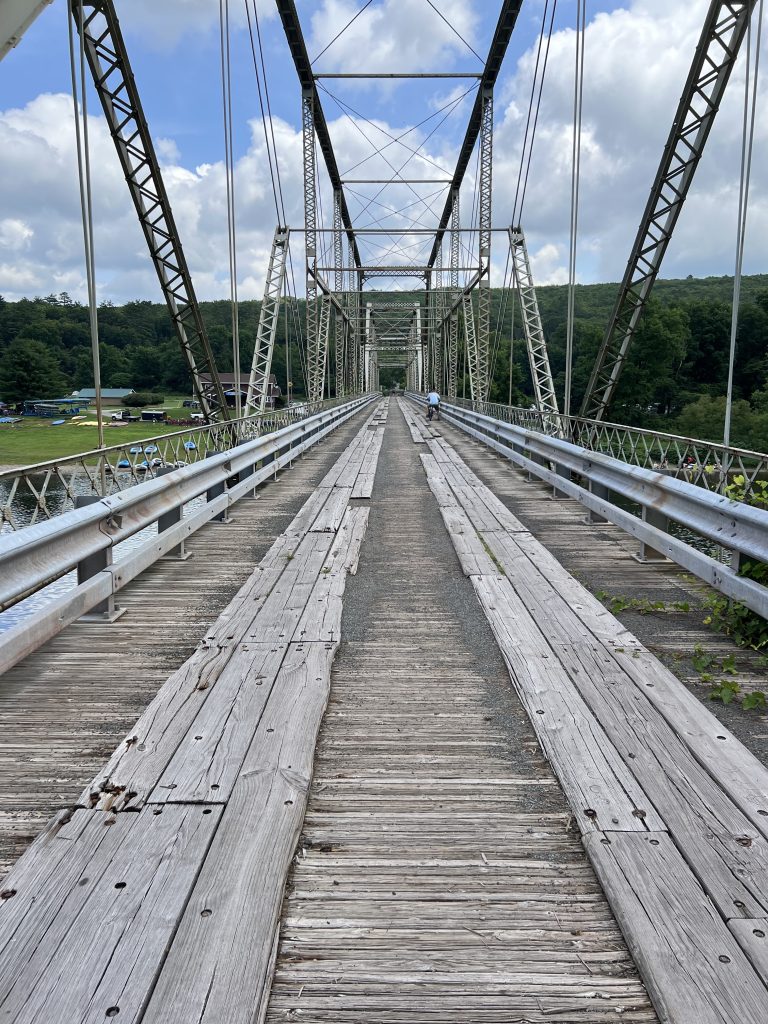
Meeting tomorrow about Skinners Falls Bridge amid efforts to save it
| February 10, 2025
Amid plans to demolish the Skinners Falls Bridge and a last-ditch effort by community activists to save it, a meeting will be held on Tuesday to hear concerns about how its removal might affect historic resources.
Opened in 1902, the bridge spans the Delaware River and connects Milanville, Pa., and Skinners Falls, N.Y. The historic Baltimore truss-style bridge has linked the two communities for generations into what many say is one community.
The bridge has fallen into such a state of disrepair that PennDOT, citing the danger the bridge poses to anyone navigating beneath it, abandoned initial hopes to rehabilitate the structure and instead plans to demolish it with explosives.
The meeting on Tuesday, which will take place remotely at 5:30 p.m., will focus on ways to mitigate how the bridge’s removal might harm cultural resources that are listed on the National Register of Historic Places, which include the bridge itself and the Milanville Historic District.
The meeting is being held under the rules of the National Historic Preservation Act to consult with individuals and groups concerned about a project’s potential effects on a historic property.
“Consultation does not mandate a specific outcome,” according to the Pennsylvania Transportation and Heritage website. “Rather, it is the process of seeking views on the project’s effect on historic properties and, if adverse effects cannot be avoided how those effects should be resolved through minimization and/or mitigation.”
At UDC meeting, bridge supporters rally
At the Thursday meeting of the Upper Delaware Council, proponents of a new plan to rehabilitate the long-closed bridge had hoped that the UDC might pause PennDOT’s plan to demolish the bridge, which would, in PennDOT’s view, make it safe for river users this summer. In comments throughout meeting, proponents of a possible historic rehabilitation talked about how the bridge encouraged a shared sense of community between the two villages.
Coming into the meeting, there was some confusion over an e-vote the board had taken in late January, which was, as explained, the same as a vote held at a regular meeting. That vote seemed to support the demolition of the bridge, but no, it did not, explained the UDC’s new chairman, Jim Rodgers of the Town of Fremont.
It was rather an approval of the process of destruction — that it aligned with the River Management Plan — not that the UDC approved of the destruction. In fact, the UDC has opposed that destruction. Rodgers further explained that the emergency nature of the bridge failure made expediting the vote a priority for the board. He referenced a letter from Pennsylvania Gov. Josh Shapiro, in which he declared “an emergency to exist … because of the deterioration of the bridge.”
Proponents argued against that interpretation of the letter, suggesting that the next sentence, where the governor said it was “not a Proclamation of Disaster Emergency,” would allow a looser interpretation of the emergency.
Barbara Arrindell, director of the Damascus Citizens for Sustainability, saw what she considered a loophole and pleaded with the board: “Please, please pause the destruction of the bridge. Consider the ecological and environmental effects, as well as whether the destruction is cost-effective.”
Arrindell wanted the board to essentially rescind the previous vote, and vote again, this time, making its opposition to the destruction clear. No motion to rescind occurred. The vote that approved the process will stand.
Seeing the bridge’s place in history
Residents in the communities the bridge has served for more than a century believe the Pennsylvania Department of Transportation has ignored the bridge’s necessary upkeep and has not been forthright about its plans.
To those residents, the bridge is much more than a simple conveyance — it is part of the community itself, and its historic value makes it worth saving.
“Pennsylvania prides itself on its history,” said Cynthia Nash, an author who has written a play about the bridge that was produced at the Delaware Valley Arts Alliance, and who lives near the bridge in Milanville. “This bridge is unique. This bridge was built by the people of Milanville, Pennsylvania, the community. Now what’s happening is the community is fighting to save it, because of the lack of responsiveness by Pennsylvania leadership.”
Floating an alternative plan
Damascus Citizens for Sustainability is seeking to get a last-minute reprieve for the bridge.
The group late last month unveiled a plan that calls for a “non-destructive stabilization” and eventual rehabilitation of the structure. The group maintains that the work can be done “without large cranes or riverbed disturbances” and in a way that is cheaper and faster than the proposed demolition.
The proposal, forwarded by Wrought Iron Bridge Works of Franklin Park, N.J., which specializes in the preservation of historic truss bridges, suggests installing temporary supports of the bridge’s floor beams from the ground.
The company’s president, Art Suckewer, wrote in a letter to historic preservation officials in New York and Pennsylvania that the immediate emergency is with the abutment on the New York side and that one-third of the span is over dry ground during low water.
“Supporting the floor beams over land is sufficient to stabilize the truss and lift it a few inches, allowing the abutment to be safely rebuilt and the truss’s end bearings to be replaced,” he wrote.
Suckewer noted that his plan had been considered in an analysis of alternative approaches and dismissed by state reviewers. But, he said, it was reviewed by people who had not used the technique.
In a separate email, he said the letter to the historic preservationists was only two pages but that more than 100 pages of supporting material was also sent.
“The point of the recommendation is to show that there is a practical solution for saving/fully restoring the bridge,” he said.
Preston Ehrler and Meg McGuire contributed reporting.


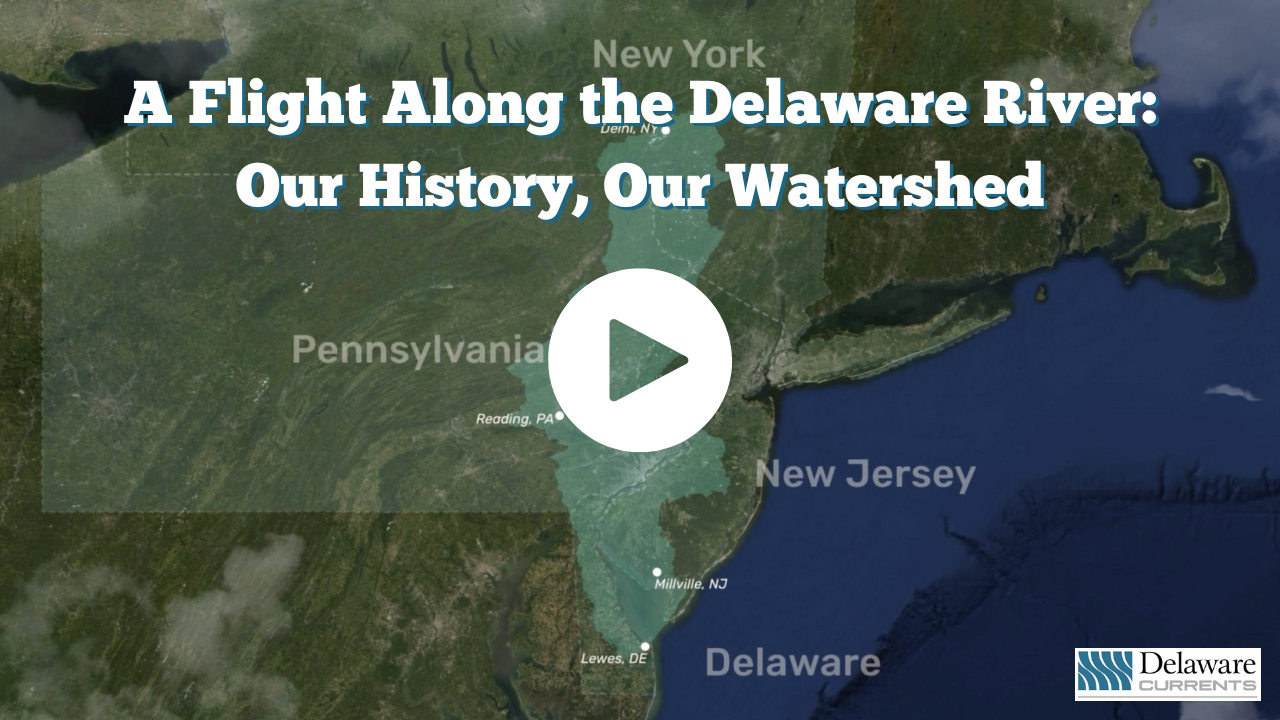
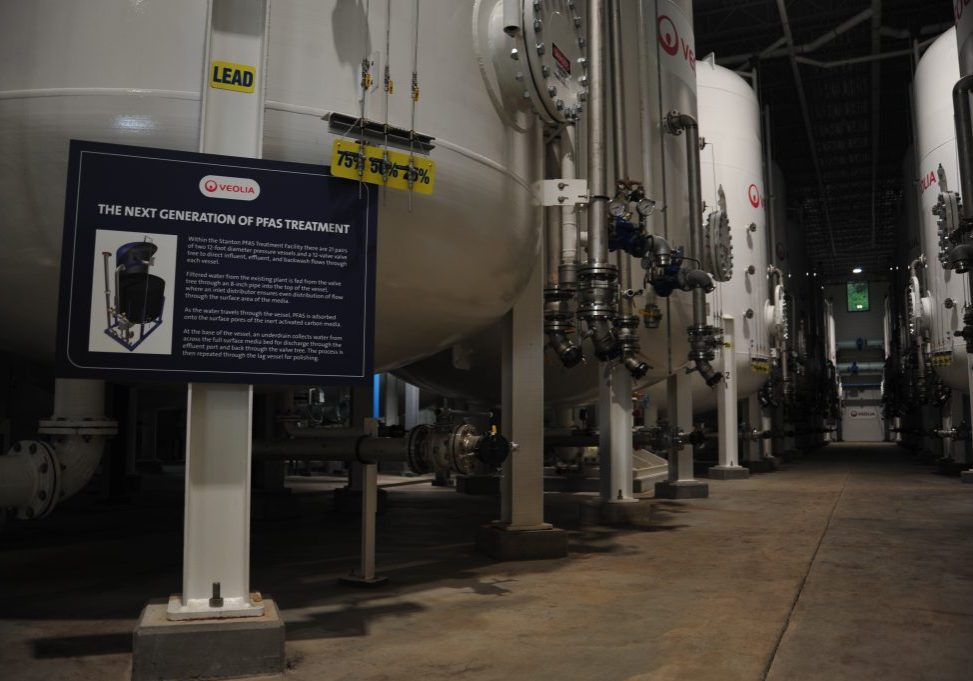
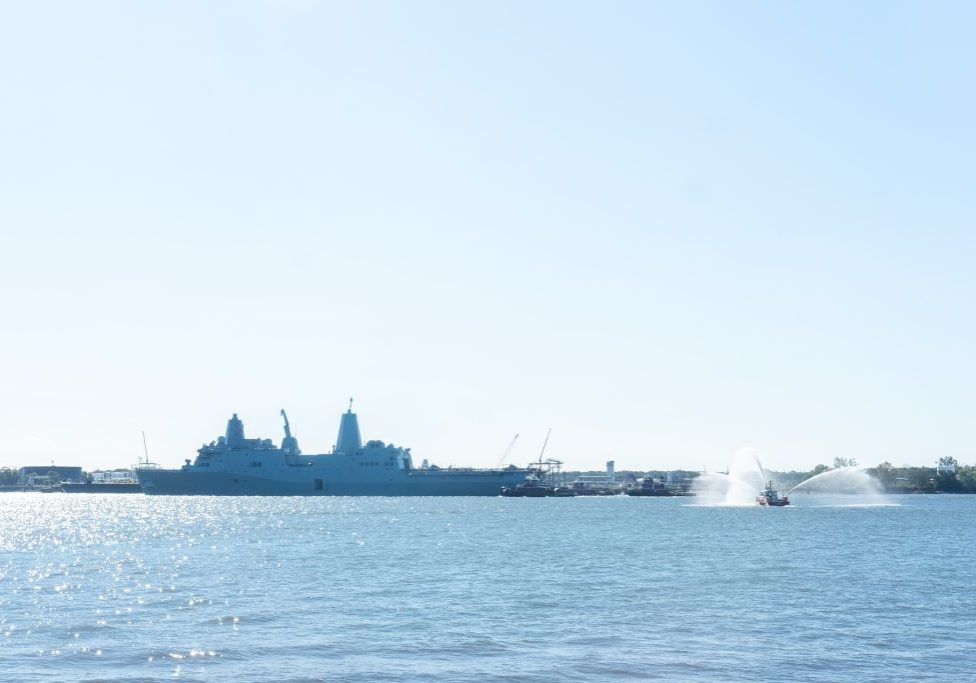


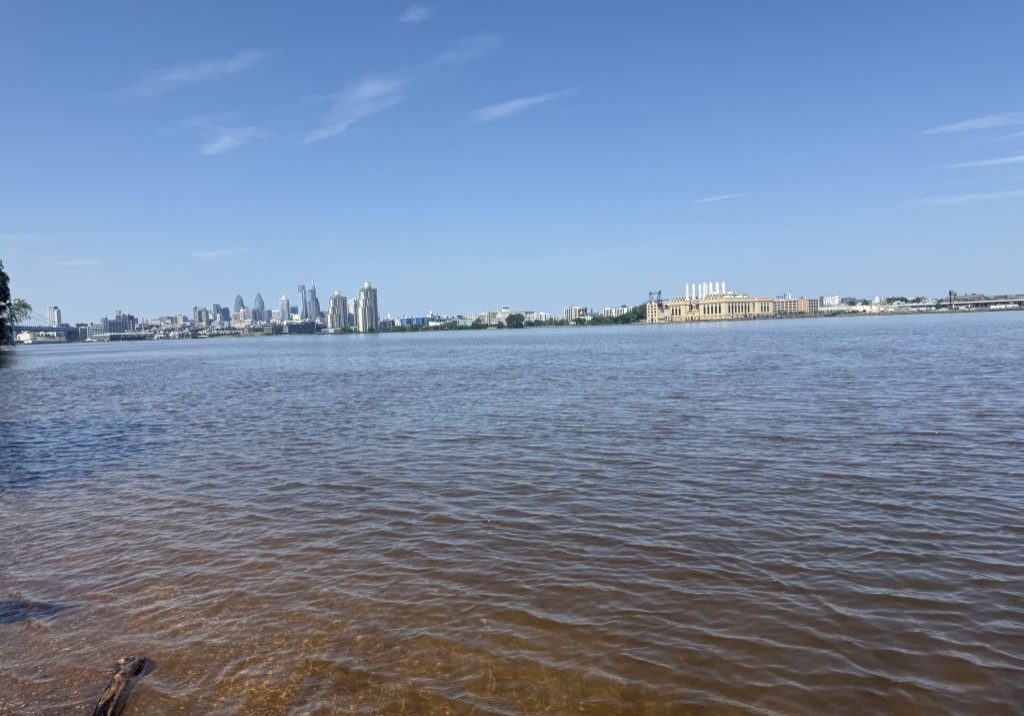
Thank You Chris for condensing this story into a segment on the situation with the historic Milanville Bridge in Wayne County, Pennsylvania.
There are decades of samples with effort from our Delaware River Valley Community submitted to the River Reporter Newspaper in Narrowsburg, NY
and in the archives of WJFF Radio Catskill : wjffradio.org.
The late Ed Wesely was a strong advocate for the preservation of The Skinners Falls Bridge; originally known as The Milanville Bridge by the Skinner’s family. Safety First is a healthy motto. But first, preserve quality with maintenance.